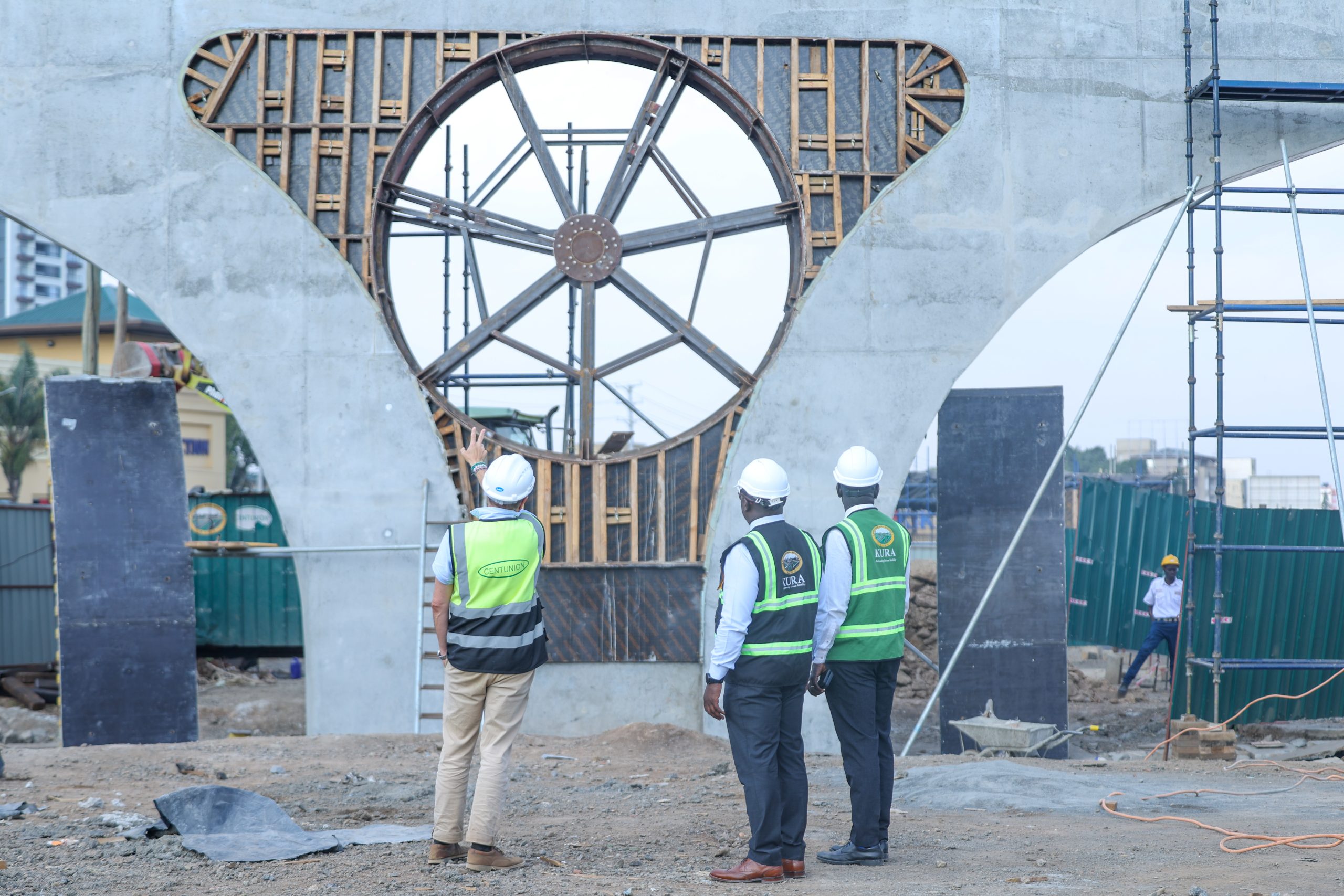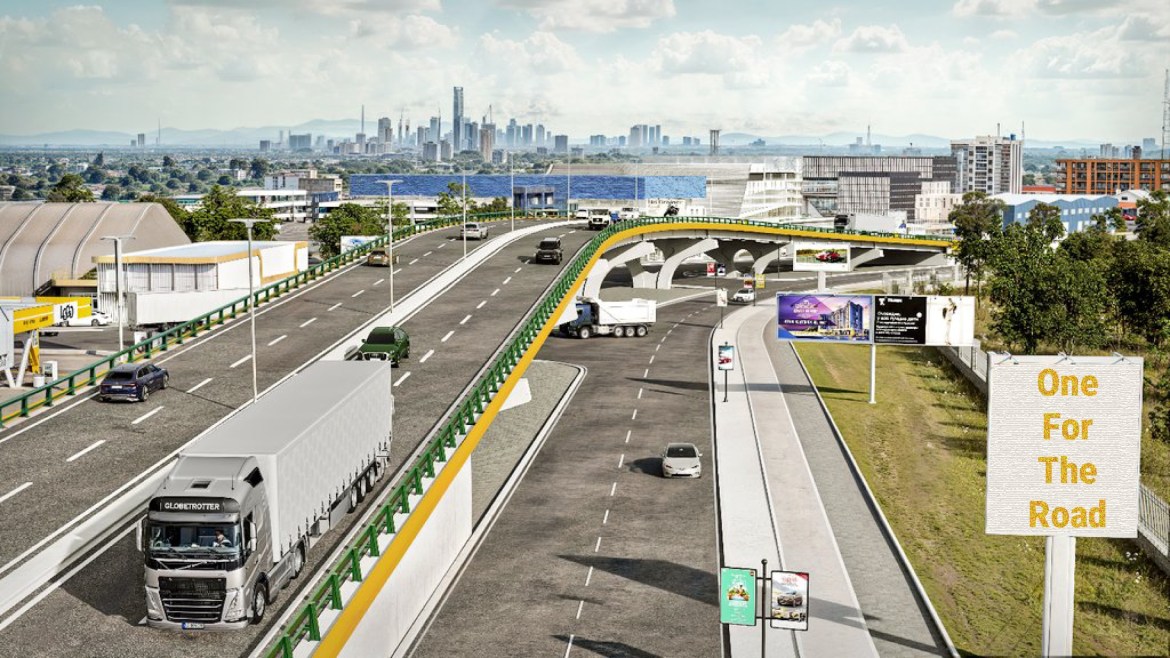
Relief in sight for motorists as Junction Mall flyover picks momentum
The perennial traffic nightmare along Ngong Road, Nairobi, could soon be a thing of the past, thanks to the ongoing construction of a massive viaduct and road expansion near Junction Mall in Dagoretti, Nairobi.
Spearheaded by the Kenya Urban Roads Authority (KURA) in partnership with the Spanish government, the project is expected to drastically reduce congestion and ease the loss of valuable hours caused by daily gridlocks.
Speaking at the Ngong Road–Naivasha Road junction, Engineer Wilfred Oginga, Director of Urban Roads Planning and Design at KURA, said “This elevated road is what we are referring to as a viaduct, which is essentially a flyover. This design allows one road to run above and another below at ground level, effectively eliminating traffic conflicts. Elevating the road prevents direct interaction between local and through traffic.”
He added that “By ensuring that through traffic does not interact with crossing or local traffic, the viaduct design will significantly reduce travel time and ease congestion. In the case of Ngong Road, we are implementing a physical separation approach over timed like traffic lights, to accommodate heavy traffic and improve both efficiency and safety on the corridor.”

The construction also takes into account the development of the 60,000-seater Talanta Stadium, a key legacy project by the government. Eng. Oginga emphasized the importance of road connectivity in ensuring safe and efficient access to the stadium, especially during major events.
“We have been given an evacuation window of just seven minutes. That means once an event ends, we must be able to safely move 60,000 people out of the stadium in under ten minutes. This road is designed with that in mind,” he said.
He added that the link to the Southern Bypass will allow international players and fans to travel directly from Jomo Kenyatta International Airport to the stadium and nearby hotels without navigating city traffic.
The centrepiece of the project is a dual carriageway viaduct with two lanes in each direction. Including the inbound and outbound approaches, the bridge will span approximately 820 metres.
The project, funded by the Spanish government to the tune of Ksh 3.8 billion, also includes circulating ground-level lanes, footpaths and cycling tracks to accommodate Non-Motorized Transport (NMT) users.
Eng. Oginga noted that the new infrastructure will drastically cut commute times, “What currently takes over two hours to travel the 26.5-kilometre distance from Ngong Town to Nairobi will soon take less than 25 minutes. The scale of development along the corridor is massive and is set to generate substantial economic activity once the project is complete.”
The road works are expected to be completed within 36 months and have been designed to cater to motorists, cyclists, and pedestrians alike.
“We want to tell all pedestrians and cyclists that you are now well covered. You all understand that we have had a lot of backlog in terms of Non-Motorised Transport – NMT facilities, earlier on, because the thinking was that roads were just for the movement of vehicles, but that thinking has since changed over time.” Said the KURA Engineer.

Residents and road users are already expressing optimism. Ezekiel Mumo, a boda boda rider who grew up in the area, said the transformation is long overdue.
“I have seen the struggles people face every day on this road. But finally, there is real hope. I believe the project will also push matatu operators to reduce fares significantly once congestion eases and mobility time reduces,” he said. “
The road is wide, construction is moving fast, and we will soon have an overpass and underpass connecting Kingara and Karen. Once it is done, it might just take me ten minutes to town. We saw the project begin a few months ago, and now it is taking real shape. At this rate, it might even end sooner than expected.”
The fast-tracking of the project follows a broader government intervention led by President William Ruto’s administration to complete all stalled road projects.
Upon taking office, the government inherited Ksh 175 billion in pending bills for stalled road projects, debts owed to 580 contractors that had crippled the road construction sector.
In April 2025, the Cabinet approved a securitisation model, allowing the Kenya Roads Board to raise funds using future revenues from the Road Maintenance Levy Fund.
This debt-free financing approach provided immediate cash flow without increasing the national debt.
By July 2025, over 393 of the 580 previously stalled projects had resumed breathing life back into communities, jobs, and infrastructure growth nationwide.
The Junction Flyover project is now a symbol of this revival and is reconnecting lives and unlocking Nairobi’s long-awaited traffic solution.
